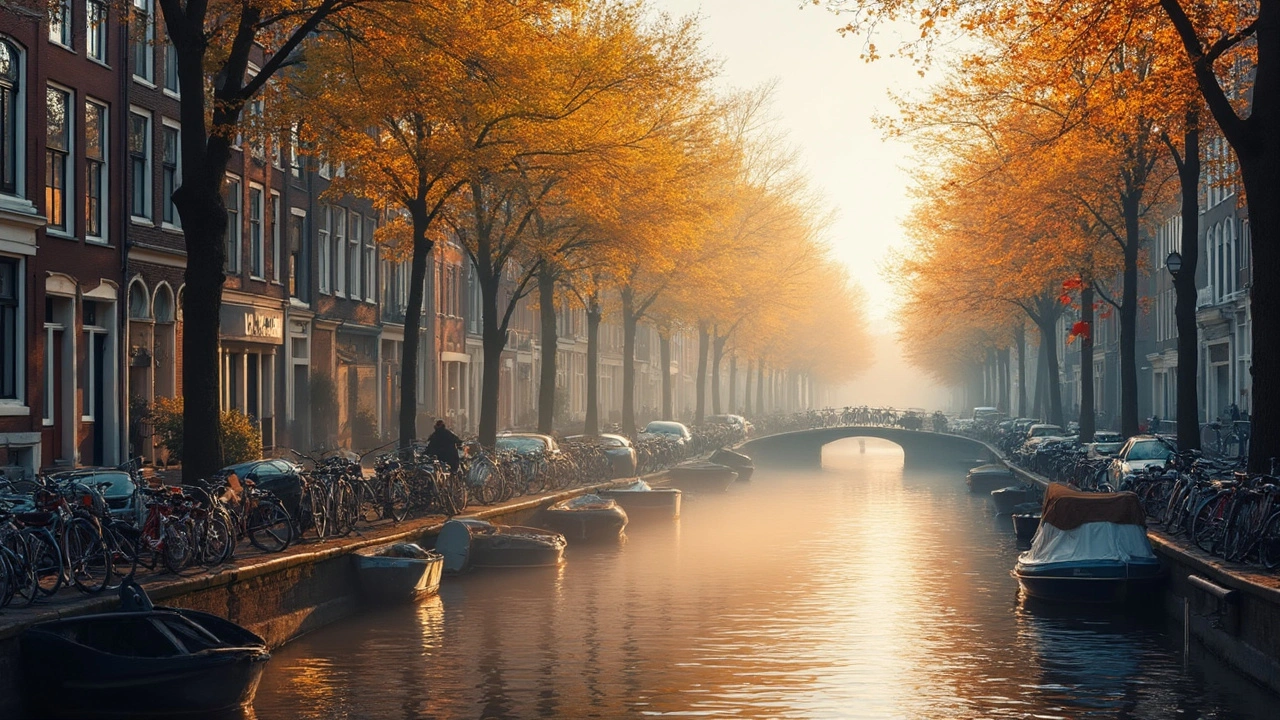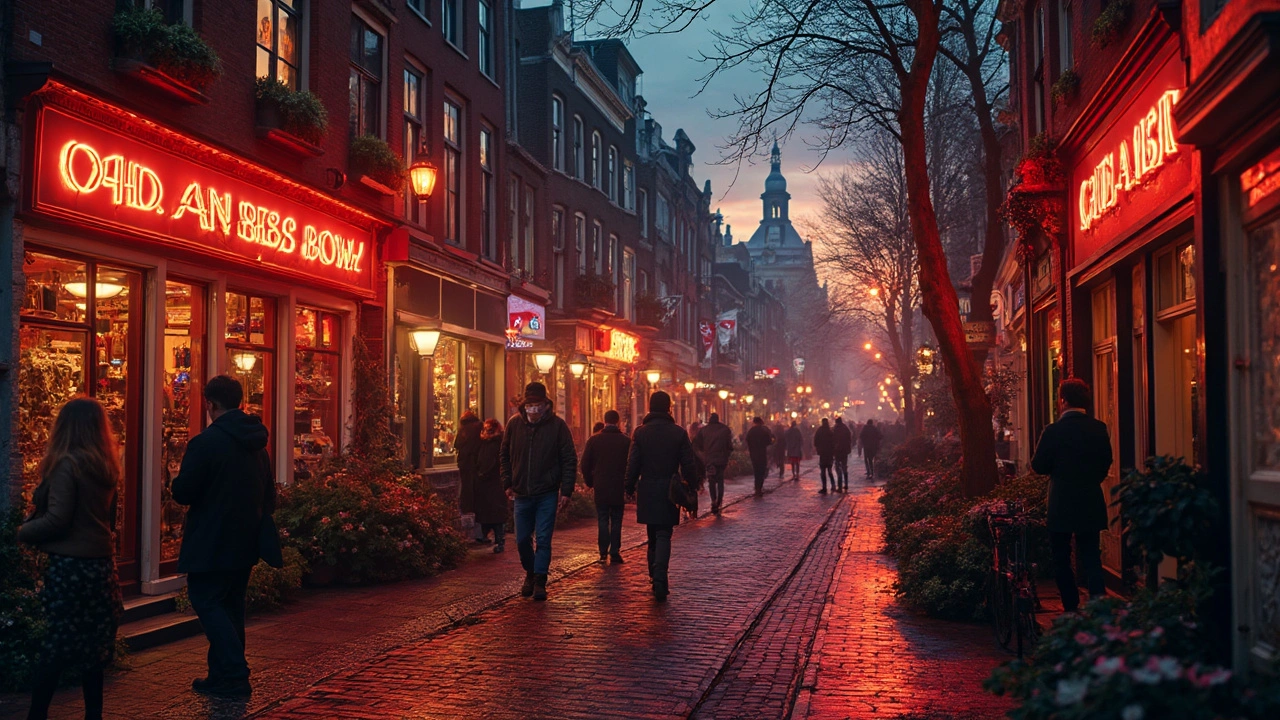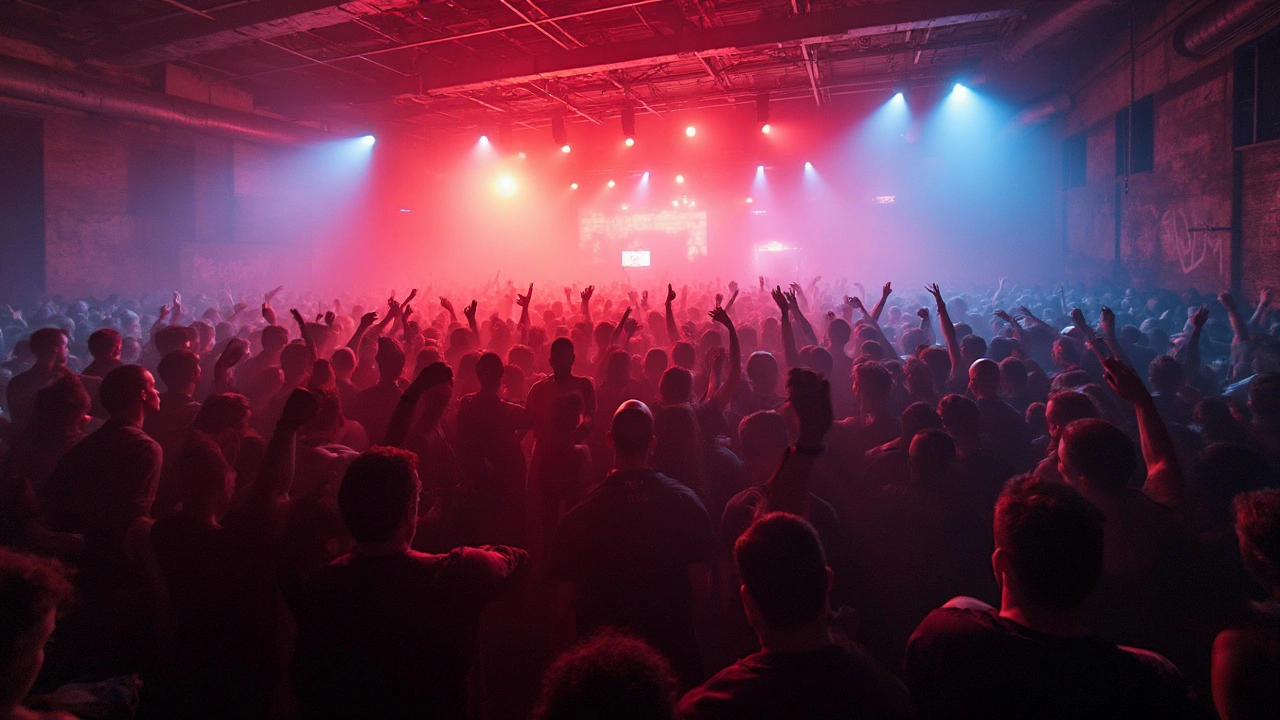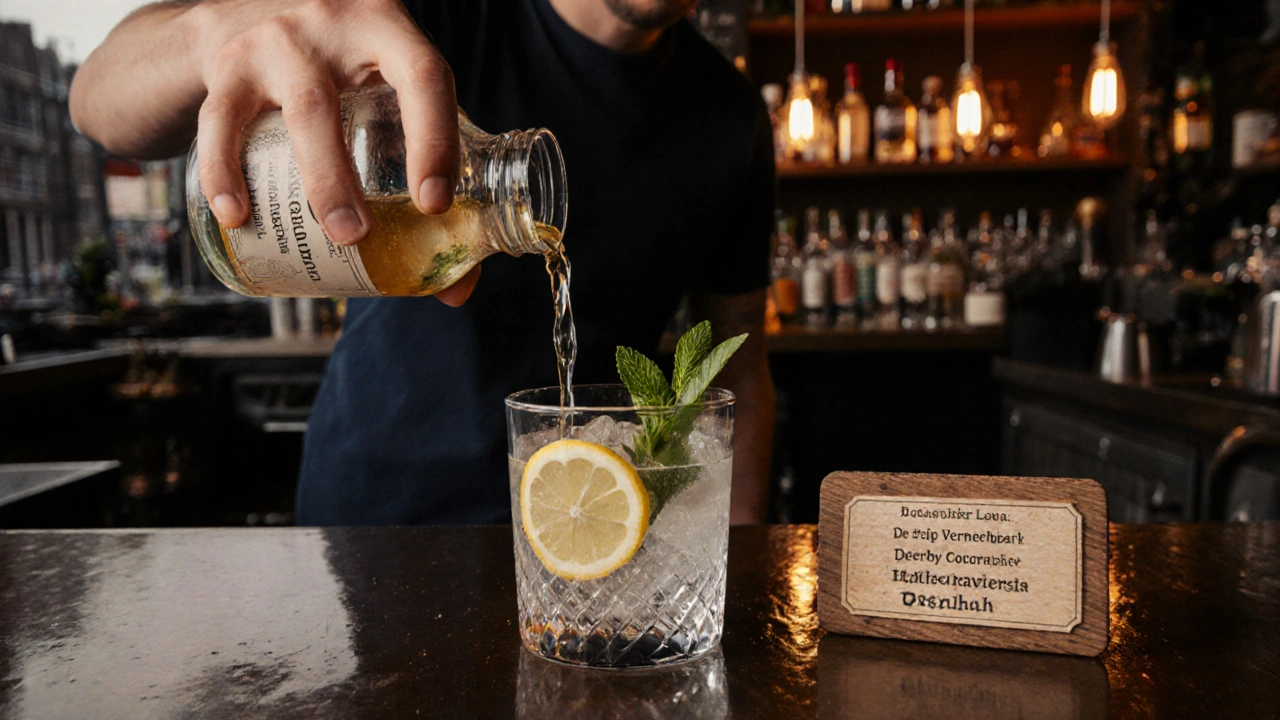
In Amsterdam, the cocktail scene isn’t just about fancy glassware or imported spirits-it’s about what grows in the dunes, what’s distilled in small Dutch distilleries, and what’s been handed down through generations of Dutch families. You won’t find a single cocktail lounge here that doesn’t whisper something about the Netherlands, whether it’s a splash of jenever from a 19th-century recipe, a twist of Dutch bergamot, or a syrup made from Haringen strawberries picked just outside the city.
Where Dutch Gin Becomes Art
Amsterdam’s love affair with gin isn’t new. The city helped shape jenever, the ancestor of modern gin, centuries ago. Today, places like De Klos on the Prinsengracht don’t just serve gin-they tell its story. Their signature drink, the Amsterdamsche Zomer, uses Botanisch Gin from Amsterdam’s own De Pijp Distillery, infused with local coriander, lemon verbena from the Vondelpark gardens, and a touch of honey from rooftop hives in the Oud-West district. You can taste the difference. It’s not just botanical-it’s territorial.
At Bar Tonic, tucked under a bicycle bridge near the Amstel River, bartenders press fresh rhubarb from nearby greenhouses in Lelystad and mix it with their house-made juniper tincture. They serve it over ice with a sprig of wild thyme plucked from the dunes near Zandvoort. No imported lime here. Just Dutch earth, turned into a drink.
The Rise of the Dutch Forager Bar
Forget exotic fruits flown in from the other side of the world. In Amsterdam, the best cocktails come from what’s wild, seasonal, and close. De Kas, a former greenhouse turned restaurant and bar, runs a foraging program that sends staff out every Tuesday to collect elderflowers, wild rosehips, and even sea buckthorn from the coastal dunes. Their Coastal Sour blends these with a base of Westerdijk Jenever, a small-batch spirit from Haarlem that’s aged in oak barrels once used for Dutch apple brandy.
At Bar Six in the Jordaan, you’ll find a cocktail called De Haring-named after the famous Amsterdam herring stalls. It’s made with pickled herring brine infused into a dry gin, shaken with apple cider vinegar from a local orchard, and topped with a foam of smoked sea salt. It sounds strange until you taste it. Then you realize: this is what Amsterdam tastes like in winter.
Local Fruit, Local Spirit
Apples aren’t just for pies in the Netherlands-they’re for spirits. De Gouden Tulp in the Nine Streets uses apple brandy from St. Joris Distillery in Zeeland, aged for five years in chestnut barrels. Their Amsterdam Autumn cocktail layers that brandy with spiced pear syrup made from fruit grown in the Betuwe region, a dash of black pepper from the Dutch spice trade archives, and a float of house-fermented cider. It’s served in a glass chilled with ice made from filtered Amstel water.
And then there’s the St. Nicolaas Citrus-a drink only available in December. It’s inspired by the traditional Dutch Sinterklaas celebration, where oranges are given as gifts. At Bar Nieuwmarkt, they press Valencia oranges from the greenhouses of Lisse, distill the zest into a clear spirit, and blend it with a touch of cardamom and a splash of Dutch honey liqueur. It’s sweet, spicy, and unmistakably Dutch.
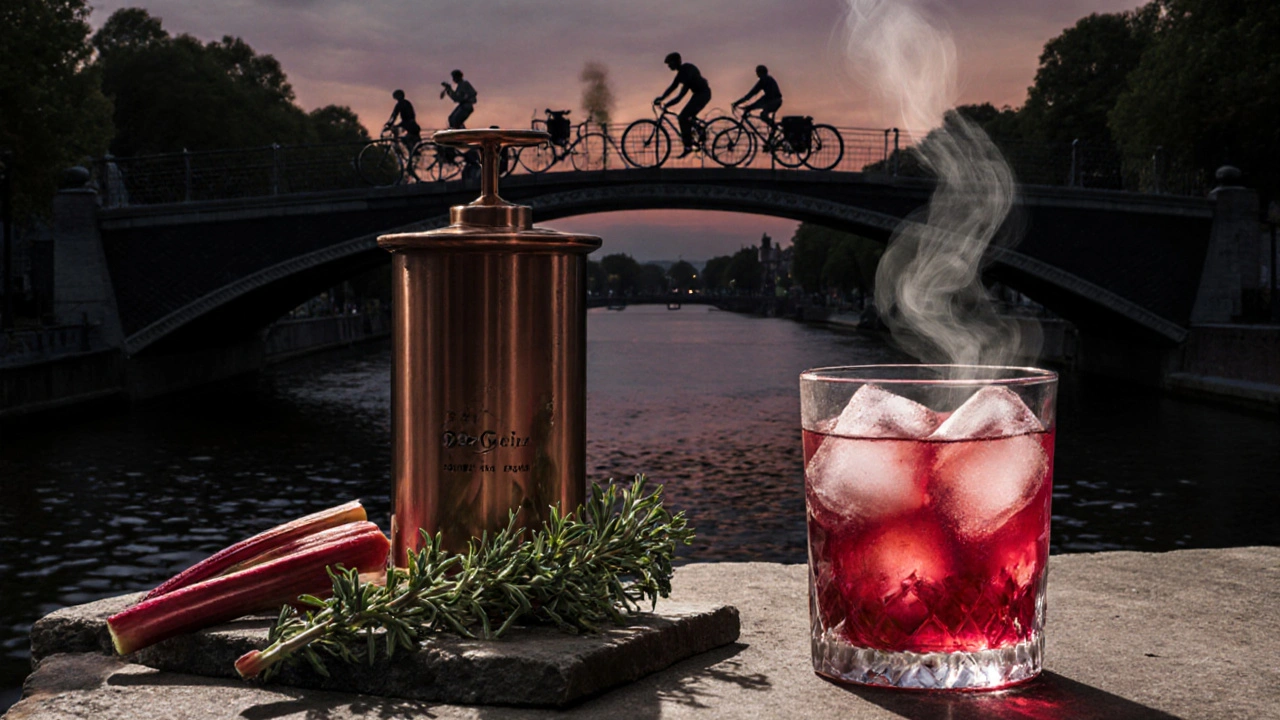
Where Tradition Meets Innovation
Some bars in Amsterdam honor the old ways with reverence. At De Drie Graafschappen in the Oud-Zuid neighborhood, they still use copper pot stills from the 1920s to make their own jenever. Their Stadsborrel (city drink) is a simple mix of their house jenever, a splash of sparkling water from the Amsterdam water board, and a slice of dried apple from a farm in the Veluwe. No sugar. No garnish. Just clarity. It’s what a Dutch grandfather might have ordered after a long day at the canal.
But innovation isn’t far behind. De Klok, a hidden bar behind a bookshop in De Pijp, uses liquid nitrogen to freeze local blueberries into edible spheres that burst in your mouth. Their cocktail, De Blauwe Stad, combines that with a gin infused with wild blueberries from the Veluwe, a hint of Dutch lavender, and a touch of fermented beetroot juice. It’s colorful, unexpected, and deeply rooted in the soil of the Netherlands.
How to Drink Like a Local
If you want to experience Amsterdam’s cocktail culture the right way, skip the tourist traps near Dam Square. Head to neighborhoods where locals live: Jordaan, De Pijp, Oud-West. Ask the bartender: “Wat is jullie meest lokale drankje?”-What’s your most local drink?
Look for these signs of authenticity:
- Ingredients listed with Dutch farm names: “Apples from De Biesbosch,” “Honey from De Biesbosch,” “Gin from De Pijp Distillery”
- Seasonal menus that change every six weeks
- Bar staff who can tell you where the elderflowers were picked
- No imported limes or pineapples in sight
And if you’re lucky, you’ll catch one of the monthly “Dutch Botanical Nights” at Bar Tonic or De Klos, where foragers and distillers come together to taste and talk. It’s not a show. It’s a conversation-with the land, the seasons, and the drink.
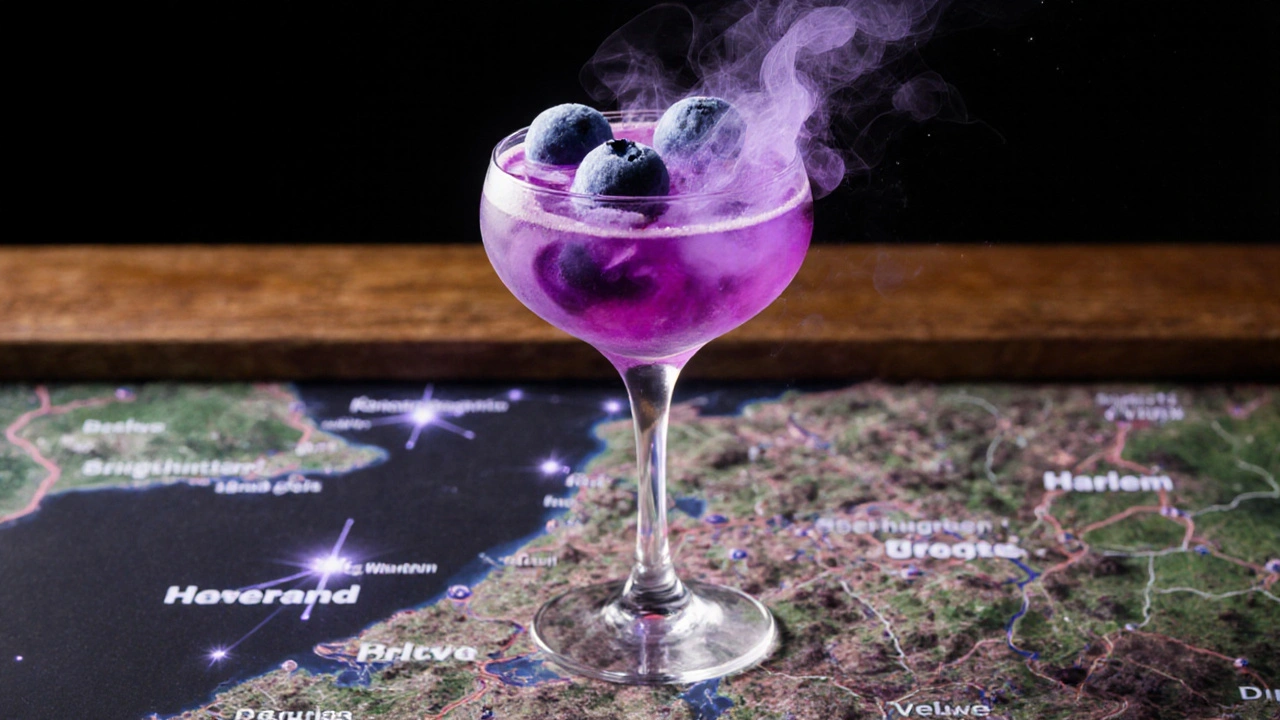
What to Order When You’re in Amsterdam
Here are five drinks you must try, and where to find them:
- Amsterdamsche Zomer - De Klos (Prinsengracht 187) - Gin, lemon verbena, local honey
- De Haring - Bar Six (Weteringschans 114) - Gin, pickled herring brine, smoked sea salt
- Amsterdam Autumn - De Gouden Tulp (Herengracht 571) - Apple brandy, spiced pear, fermented cider
- De St. Nicolaas Citrus - Bar Nieuwmarkt (Nieuwmarkt 25) - Distilled orange zest, cardamom, honey liqueur
- De Blauwe Stad - De Klok (Van Woustraat 141) - Liquid nitrogen blueberries, Dutch lavender, beetroot ferment
Each one tells a story. Not just about taste-but about place. About waterways. About soil. About the quiet pride of a city that knows its roots and refuses to hide them behind imported garnishes.
Why This Matters
In a world where cocktails are often about escapism-tropical vibes, exotic names, far-flung ingredients-Amsterdam’s bars are doing the opposite. They’re grounding you. Reminding you that the best flavors aren’t found on a map of the world, but on a map of your own backyard. The Netherlands doesn’t have palm trees. But it has wild thyme, herring brine, apple orchards, and centuries of distilling wisdom. And that’s more than enough.
So next time you’re walking past the canals after sunset, skip the neon signs and the $20 mojitos. Find a quiet bar with a wooden counter, a chalkboard menu, and a bartender who knows where the berries come from. Order something that tastes like the Netherlands. You’ll remember it longer than any skyline view.
Are there cocktail lounges in Amsterdam that use only Dutch ingredients?
Yes. Many of Amsterdam’s top cocktail bars, like De Klos, Bar Tonic, and De Klok, make it a point to source 90% or more of their ingredients locally. This includes gin from Dutch distilleries, fruit from Dutch orchards, herbs from the dunes, and even honey from rooftop hives in the city. Some bars, like De Drie Graafschappen, even make their own jenever on-site using traditional methods.
What is jenever, and why is it important in Amsterdam cocktails?
Jenever is the Dutch ancestor of gin, made from malt wine and juniper berries. Unlike modern gin, it has a maltier, more spirit-forward flavor. It’s been distilled in the Netherlands since the 1500s and remains a point of national pride. In Amsterdam, jenever isn’t just a base spirit-it’s a cultural symbol. Many cocktail bars use it in place of gin to create drinks that are uniquely Dutch, like the classic Stadsborrel or modern twists like the Amsterdamsche Zomer.
Where can I find the best local gin in Amsterdam?
The best local gin comes from small distilleries like De Pijp Distillery, Westerdijk Jenever, and Amsterdam Gin Company. You can taste them at their tasting rooms or at bars that specialize in Dutch spirits, such as De Klos, Bar Tonic, and De Klok. Look for labels that mention the region-like “from the Veluwe” or “distilled in Haarlem”-as these indicate true local sourcing.
Do Amsterdam cocktail bars change their menus seasonally?
Almost all serious cocktail bars in Amsterdam change their menus every 6 to 8 weeks to match the seasons. In spring, you’ll find elderflower and rhubarb. In summer, wild berries and herbs from the dunes. In autumn, apples and pears from the Betuwe. In winter, citrus, spices, and fermented flavors like beetroot and herring brine. This isn’t a trend-it’s a tradition.
Is it possible to visit a Dutch distillery as part of a cocktail tour?
Yes. Several distilleries offer guided tours with tastings. De Pijp Distillery in Amsterdam offers weekly tours ending with a cocktail-making class. Westerdijk Jenever in Haarlem lets you taste their aged jenever straight from the barrel. And De Gouden Tulp partners with local foragers to run seasonal “Taste of the Netherlands” tours that include a stop at an apple orchard and a bar tasting. Book ahead-these fill up fast.
Amsterdam’s cocktail scene doesn’t try to be global. It doesn’t need to. It’s already perfect-just as it is. Local. Honest. Rooted.


